2024-02-17
Complete Guide to Indoor Playgrounds
Indoor playgrounds have emerged as a cornerstone of modern childhood, offering a vibrant sanctuary where the laughter and energy of children can flourish indoors, away from the unpredictability of outdoor elements. These playgrounds, intricately designed with a medley of ladders, stairs, and an array of captivating accessories, serve as a dynamic space for children to explore, climb, and slide in the comfort of an indoor setting. Beyond just a collection of play equipment, these environments are carefully crafted to stimulate children’s physical and imaginative capabilities, from toddlers to older kids. The appeal of indoor playgrounds stretches across the spectrum of needs and interests, making them a versatile option for families, caregivers, and businesses.
For businesses, the concept of an indoor playground represents a lucrative and socially beneficial venture. It’s not just about providing a space for play; it’s about creating a community hub where children can engage in healthy, active play in a safe and controlled environment. With the addition of various play accessories – from soft play items designed for toddlers to more complex structures like rock walls and rope courses for older children – a well-thought-out indoor playground can cater to a wide age range, ensuring inclusivity and accessibility. This attraction diversity enhances the play experience and broadens the playground’s appeal, attracting a wider audience and fostering a sense of community among families seeking a fun and safe environment for their children to play and learn.
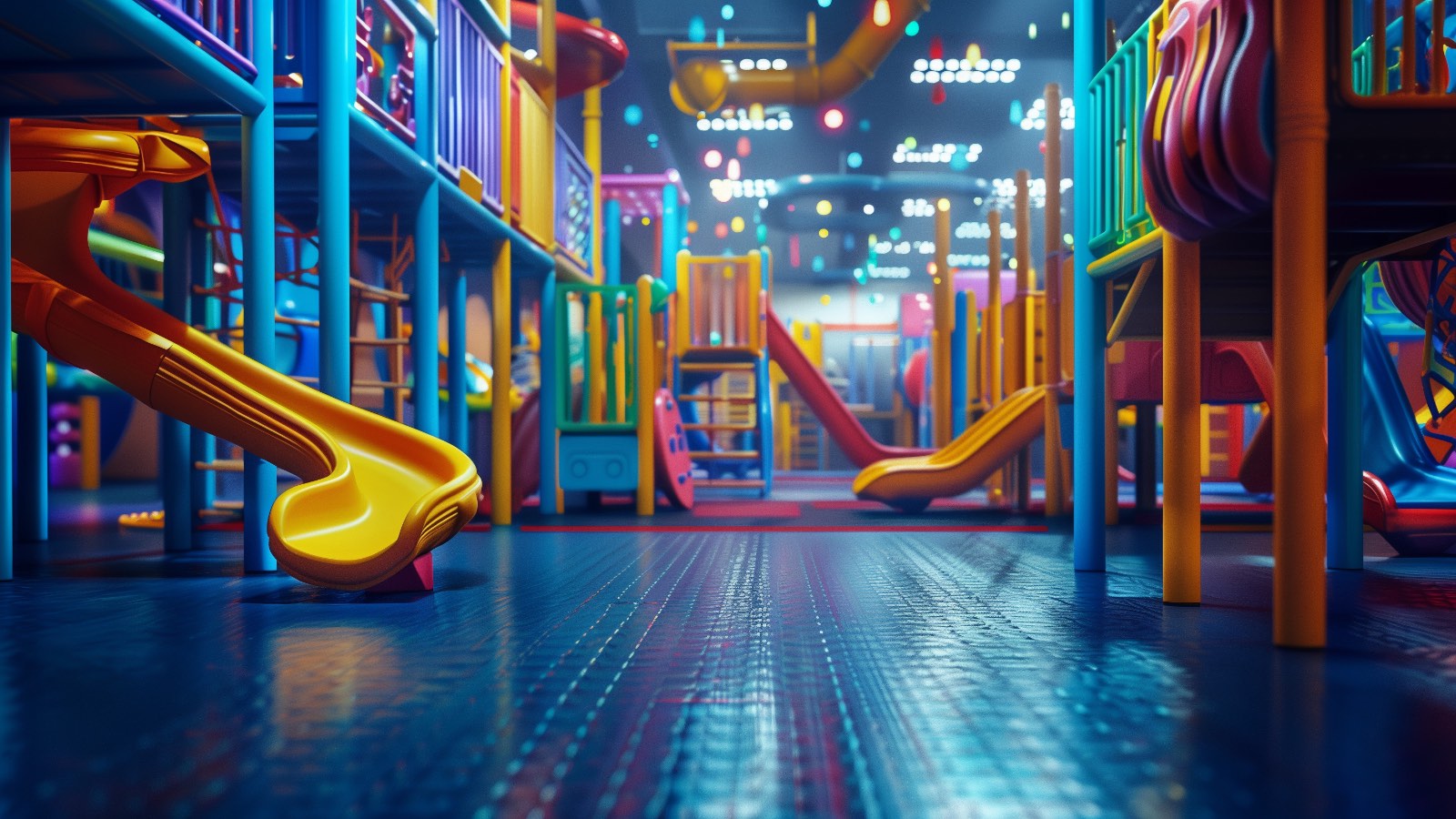
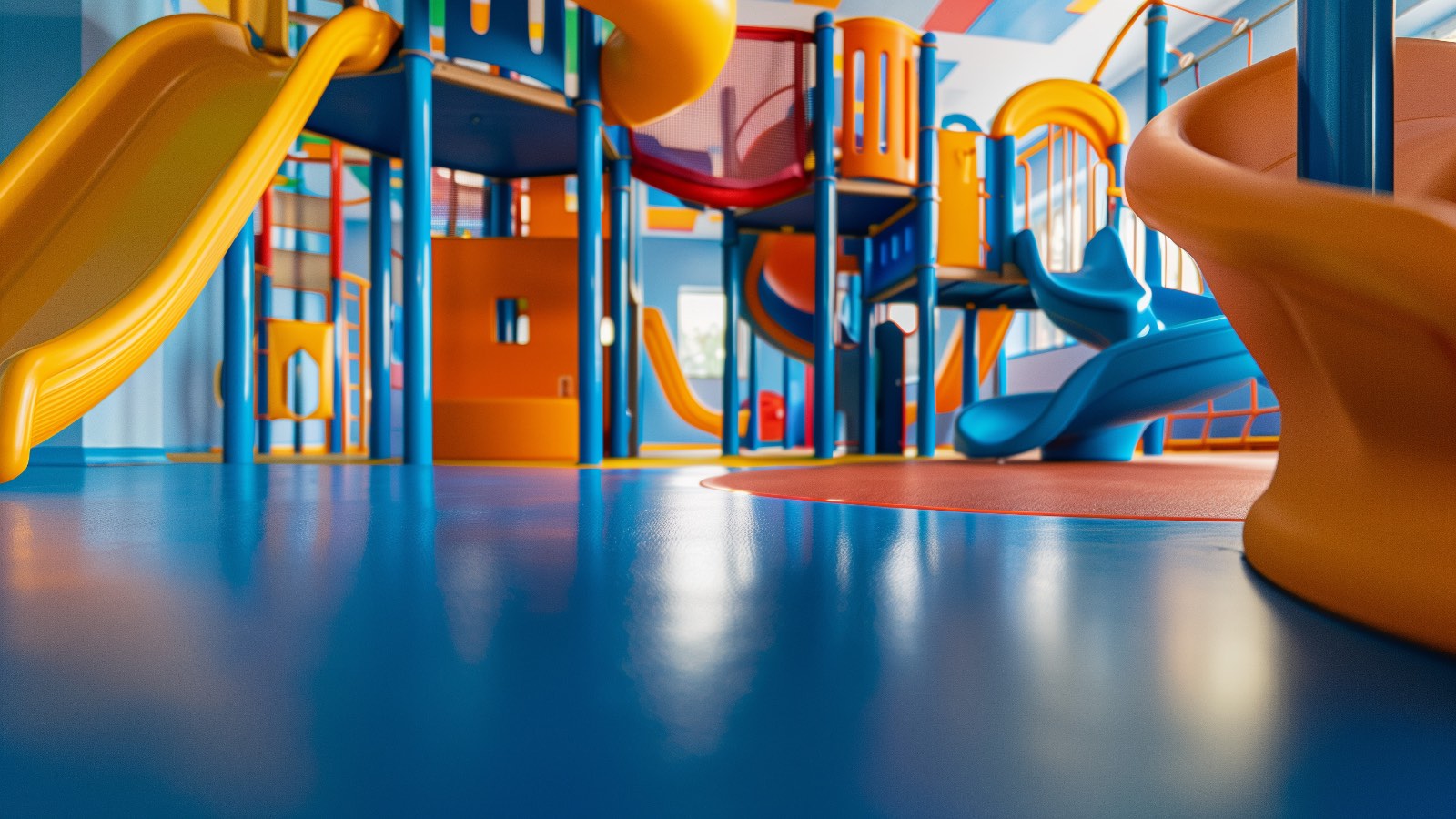
What is Indoor Play?
Indoor play encompasses activities conducted in a controlled indoor environment, featuring equipment like monkey bars, rock walls, and slides. These playgrounds are designed with children’s safety and entertainment in mind, using natural wood and rubber surfacing to ensure a safe landing for the little ones. Including toys, playsets and creative structures like houses and ladders, indoor playgrounds are perfect for children to enjoy climbing, sliding, and imaginative play, regardless of the weather outside.
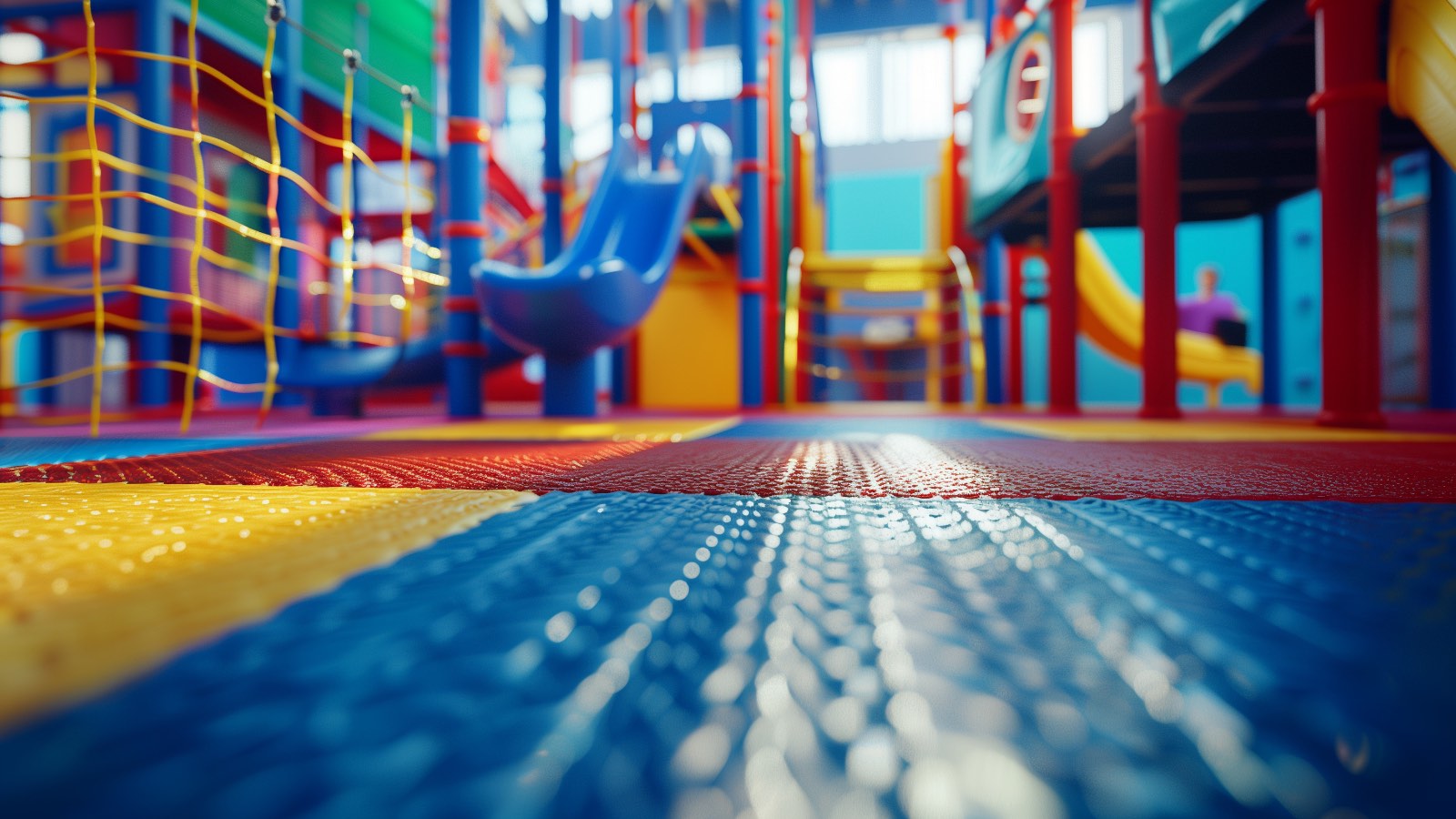
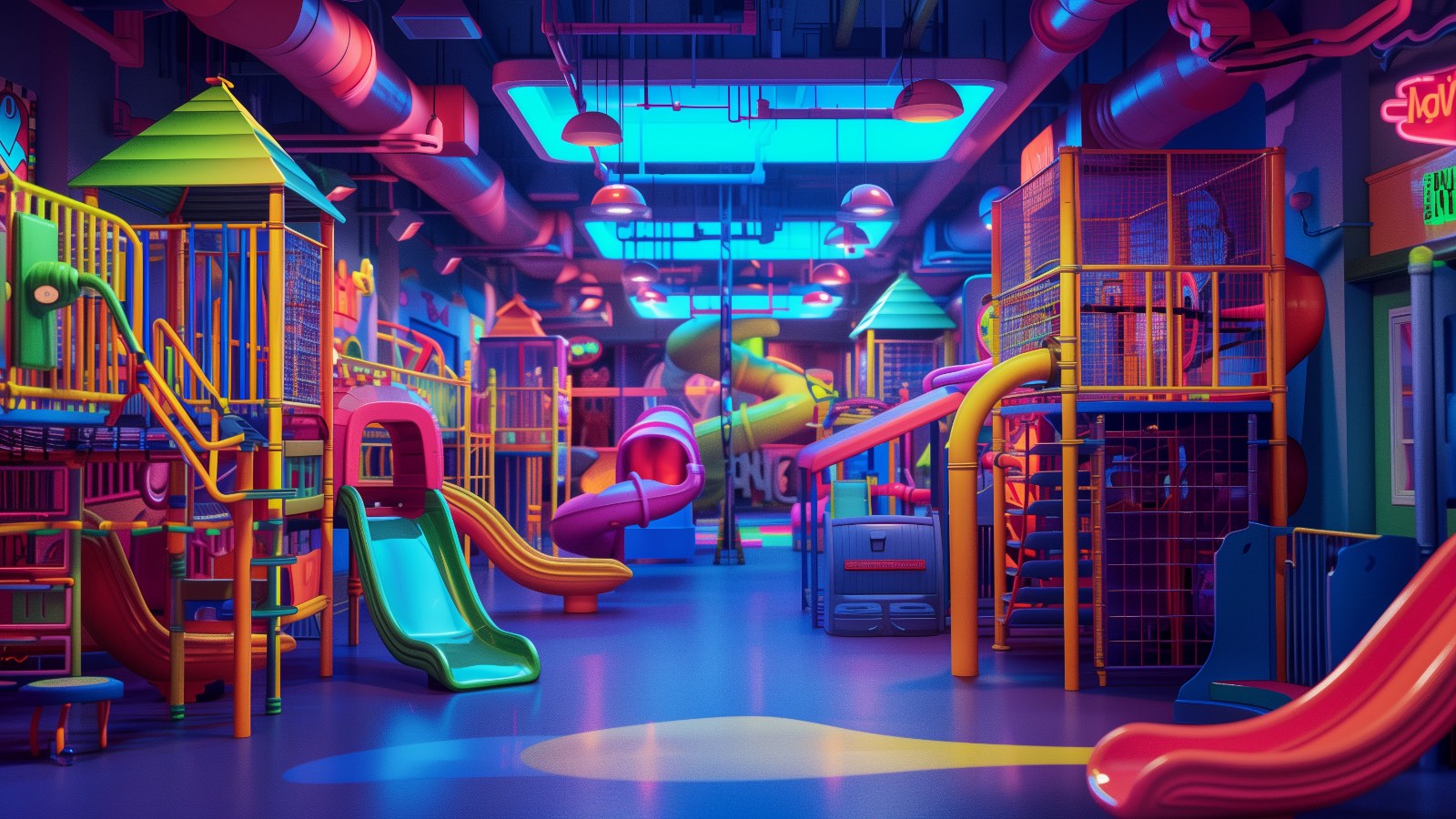
Indoor vs. Outdoor Play: Which is Better?
Both indoor and outdoor play areas offer distinct benefits and challenges, contributing differently to a child’s development. Here’s a closer look at the pros and cons of each to help parents and educators make informed decisions about where children spend their playtime.
Indoor Play
Indoor play provides a controlled environment where children can explore, learn, and play regardless of the weather outside. It’s designed with safety and inclusivity, making it accessible to children of various ages and abilities.
Pros of Indoor Play:
- Weather-Independent: Play can continue no matter the weather conditions outside, ensuring children get physical activity year-round.
- Safety: Indoor playgrounds are designed with soft materials and padding to minimize the risk of injuries.
- Educational Opportunities: Many indoor playsets are designed with educational themes that encourage learning through play.
- Hygiene and Cleanliness: Indoor environments can be controlled and cleaned regularly, reducing exposure to outdoor dirt and germs.
Cons of Indoor Play:
- Limited Space: Indoor play areas can be limited by the size of the building, restricting the amount of running and exploration children can do.
- Cost: Visiting commercial indoor playgrounds or purchasing indoor play equipment can be expensive.
- Less Interaction with Nature: Children playing indoors miss the benefits of connecting with the natural world.
Outdoor Play
Outdoor play encourages children to engage with their environment, promoting physical health and an appreciation for nature. It offers unique challenges and freedoms not found in indoor settings.
Pros of Outdoor Play:
- Physical Health: The larger spaces allow for more vigorous activities like running, jumping, and climbing, which are excellent for physical development.
- Connection with Nature: Playing outdoors helps children develop a sense of connection with the environment and learn about the world around them.
- Social Skills: Outdoor play often involves unstructured group play, which can improve social skills and teamwork.
- Creativity and Exploration: The ever-changing outdoor environment offers endless exploration and imaginative play opportunities.
Cons of Outdoor Play:
- Weather-Dependent: Bad weather can limit the availability of outdoor play, impacting regular physical activity.
- Safety Concerns: Outdoor play areas may present more risks of injury from falls or contact with natural elements.
- Supervision: Depending on the location, outdoor play can require more intensive supervision to ensure children’s safety.
- Access: Not everyone has easy access to safe, outdoor play spaces, which can limit opportunities for outdoor play.
Understanding these pros and cons helps to appreciate the value of both indoor and outdoor play in a child’s life. The best approach often involves a balance, allowing children to reap the benefits of both environments and develop into well-rounded individuals.
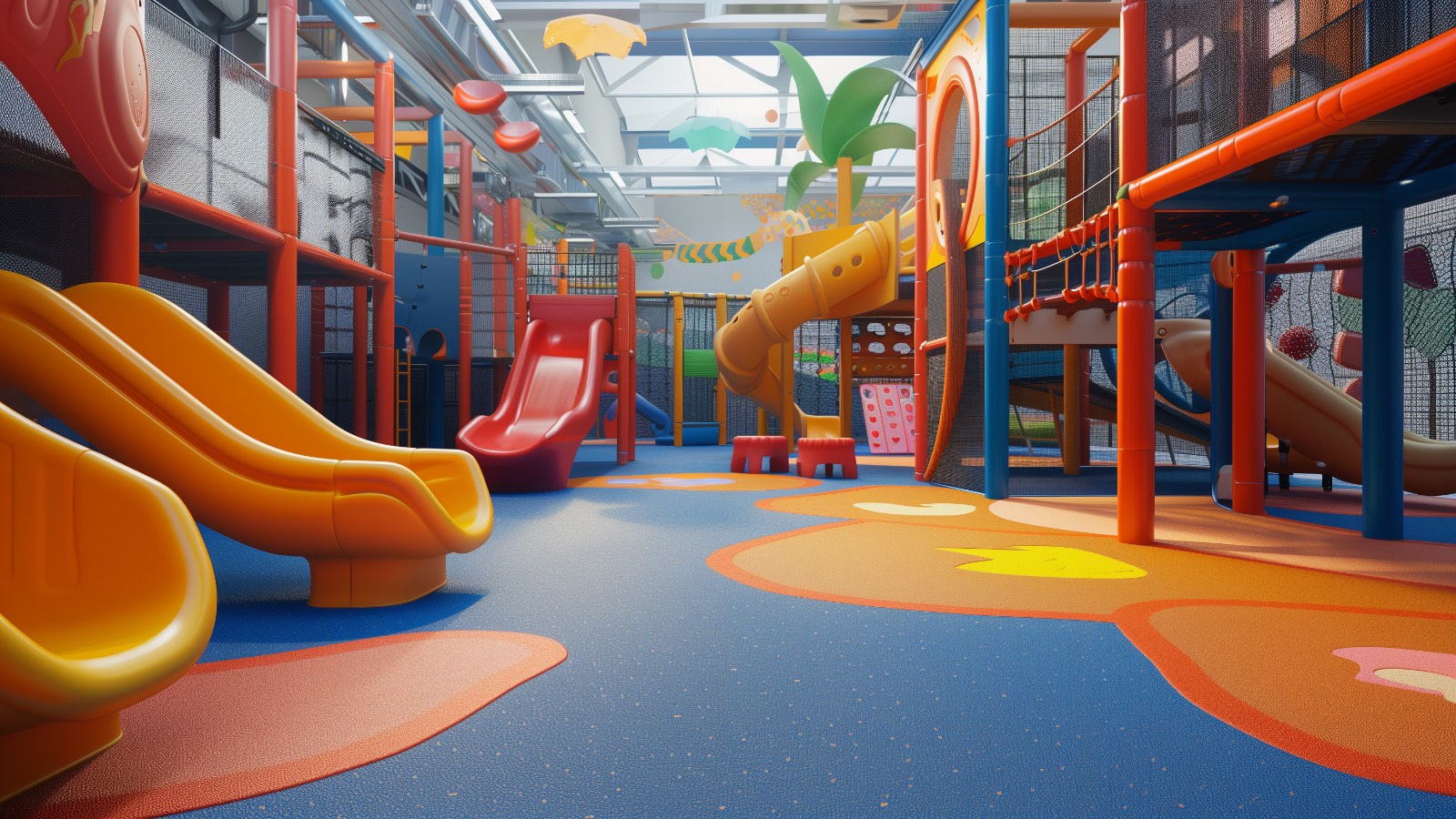
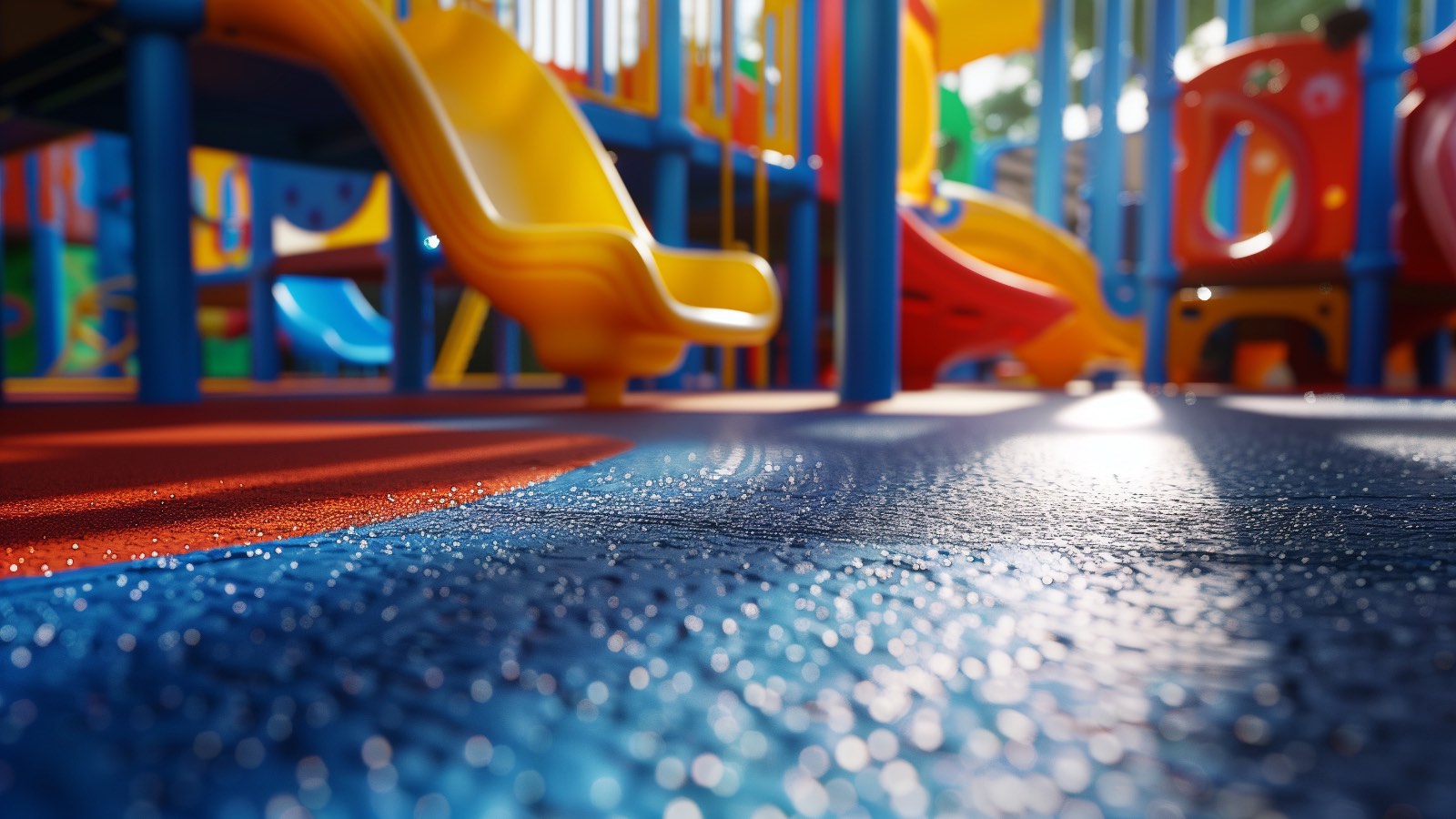
Ideal Size for an Indoor Playground
The size of an indoor playground can vary greatly depending on the available space, the age range of the children it is designed for, and the type of equipment and activities planned. For businesses, a larger space allows for a broader range of equipment and activities, which can cater to a wider age group. The play area should be scaled for home use to fit safely within the available indoor space, considering the need for adequate clearance around play equipment for safe use.
Key Considerations for Playground Size:
- Space for Equipment: Ensure enough room for playsets, slides, and climbing structures.
- Safety Zones: Allocate space around equipment for safe landings and to prevent overcrowding.
- Growth and Adaptability: Choose a size that allows for potential expansion as children grow or interests change.
- Activity Areas: Consider separate zones for different types of play, such as a quiet area for reading or a space for active games.
Generally, a space of at least 20-30 square meters can accommodate basic indoor playground equipment for home use. This estimation provides a starting point, but the ultimate size should be adjusted based on specific needs and circumstances, ensuring a balance between playful opportunities and safety requirements.
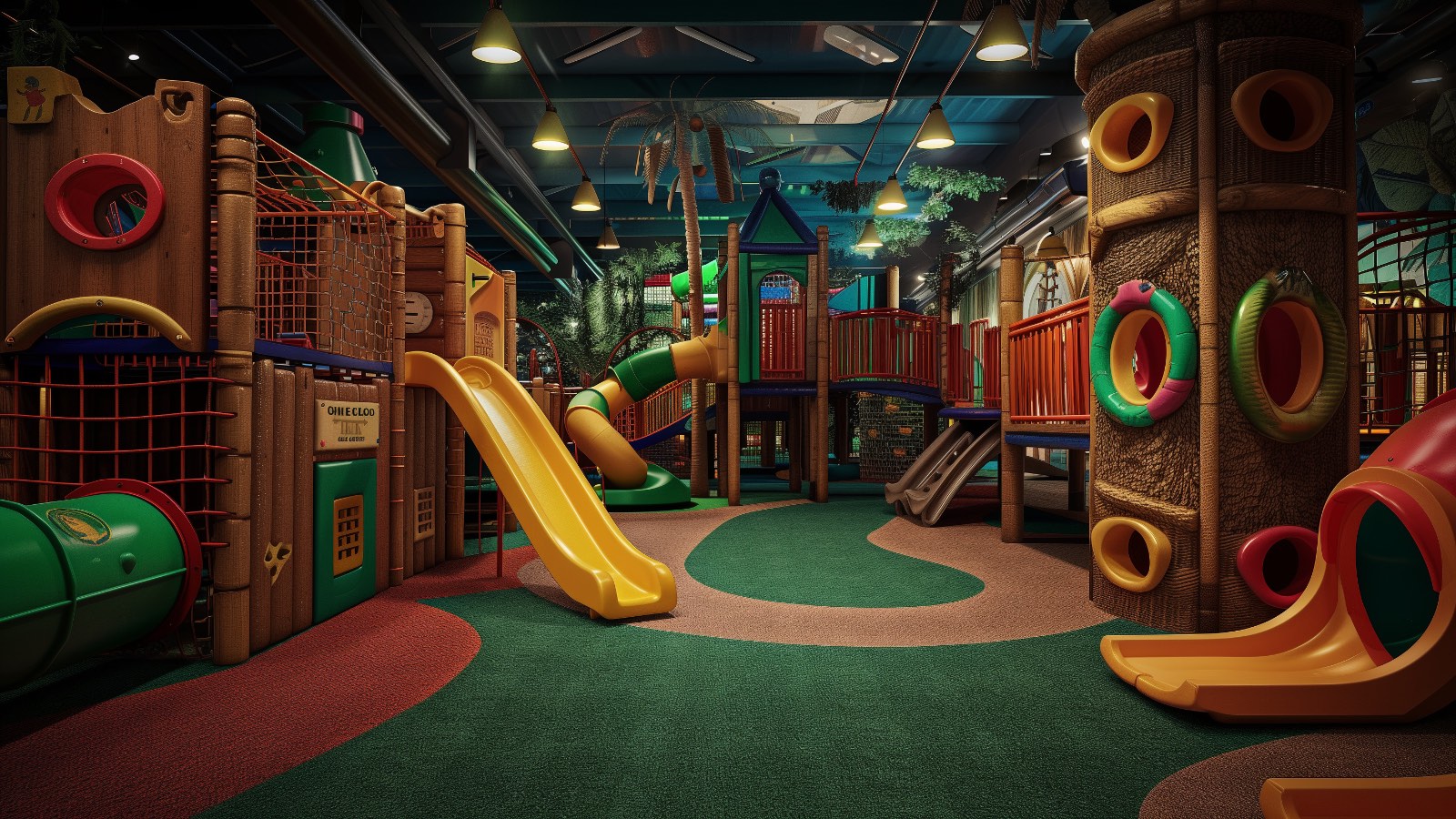
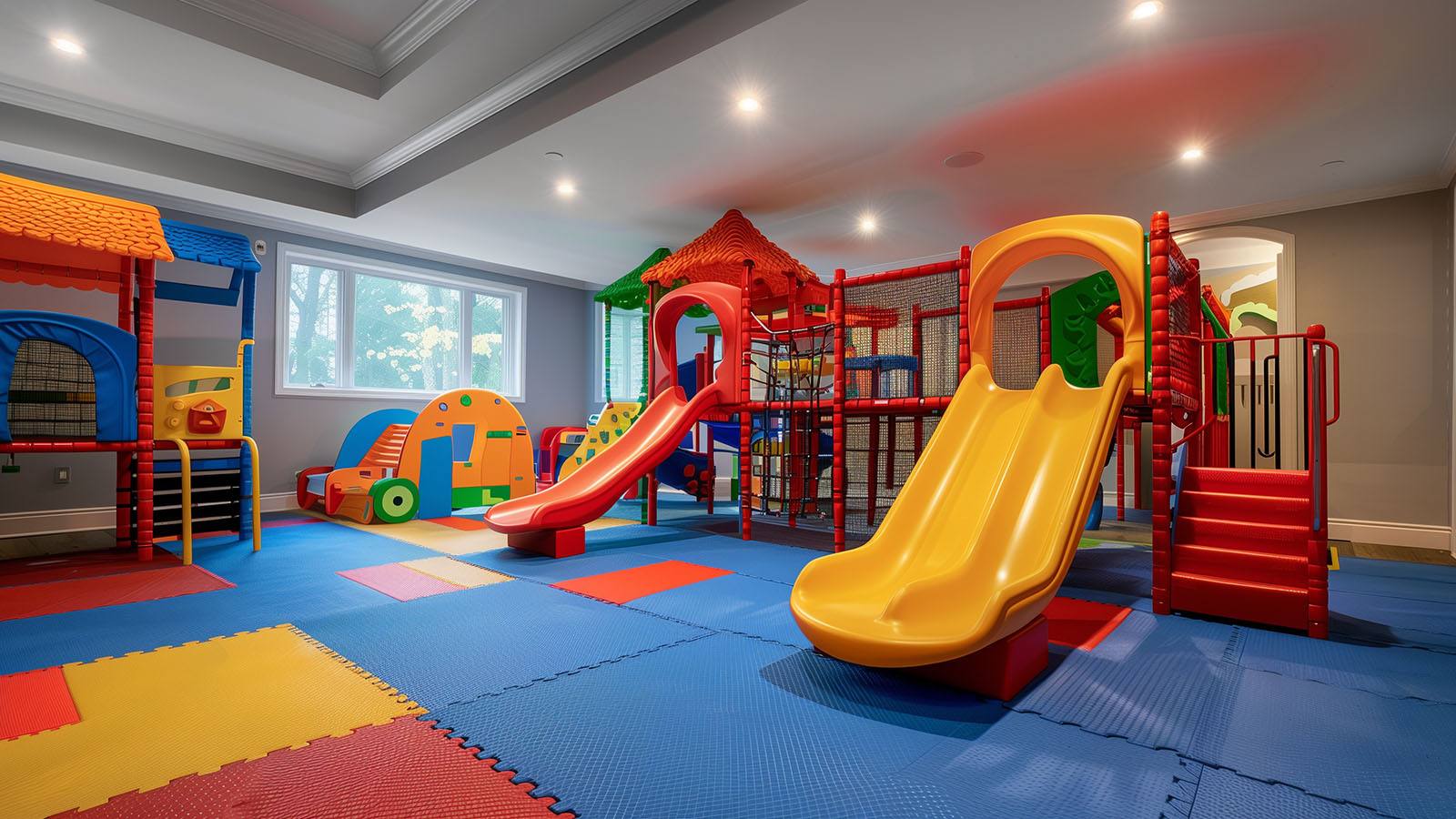
Building an Indoor Play Area
Creating an indoor play area involves carefully planning and considering safety, entertainment value, and developmental benefits. For businesses, this means selecting high-quality, durable playground equipment that meets safety standards and is appropriate for the children’s age group. Essential steps include:
- Design Planning: Assess the space, decide on the theme, and select equipment that maximizes available space while offering a variety of activities.
- Safety First: Ensure all equipment, such as slides, monkey bars, and climbing walls, meet safety standards. Consider the use of natural wood or rubber surfacing to reduce injury risks.
- Accessibility and Flow: Design the layout for easy supervision and smooth flow of movement, with clearly defined areas for different activities.
Setting Up a Kids’ Play Area at Home
Creating a fun and engaging play area at home requires less space and can be tailored to your child’s preferences. Here are steps to set up a simple indoor playground:
- Select the Right Equipment: Choose compact, easy-setup equipment designed for indoor use. Consider foldable playsets, mini rock walls, and slides that fit your available space.
- Safety and Comfort: Use soft mats or rubber surfacing beneath climbing areas and ensure adequate padding around the play area.
- Storage and Flexibility: Opt for play equipment with easy storage options to keep the space tidy. Modular designs can be easily rearranged or expanded as children grow.
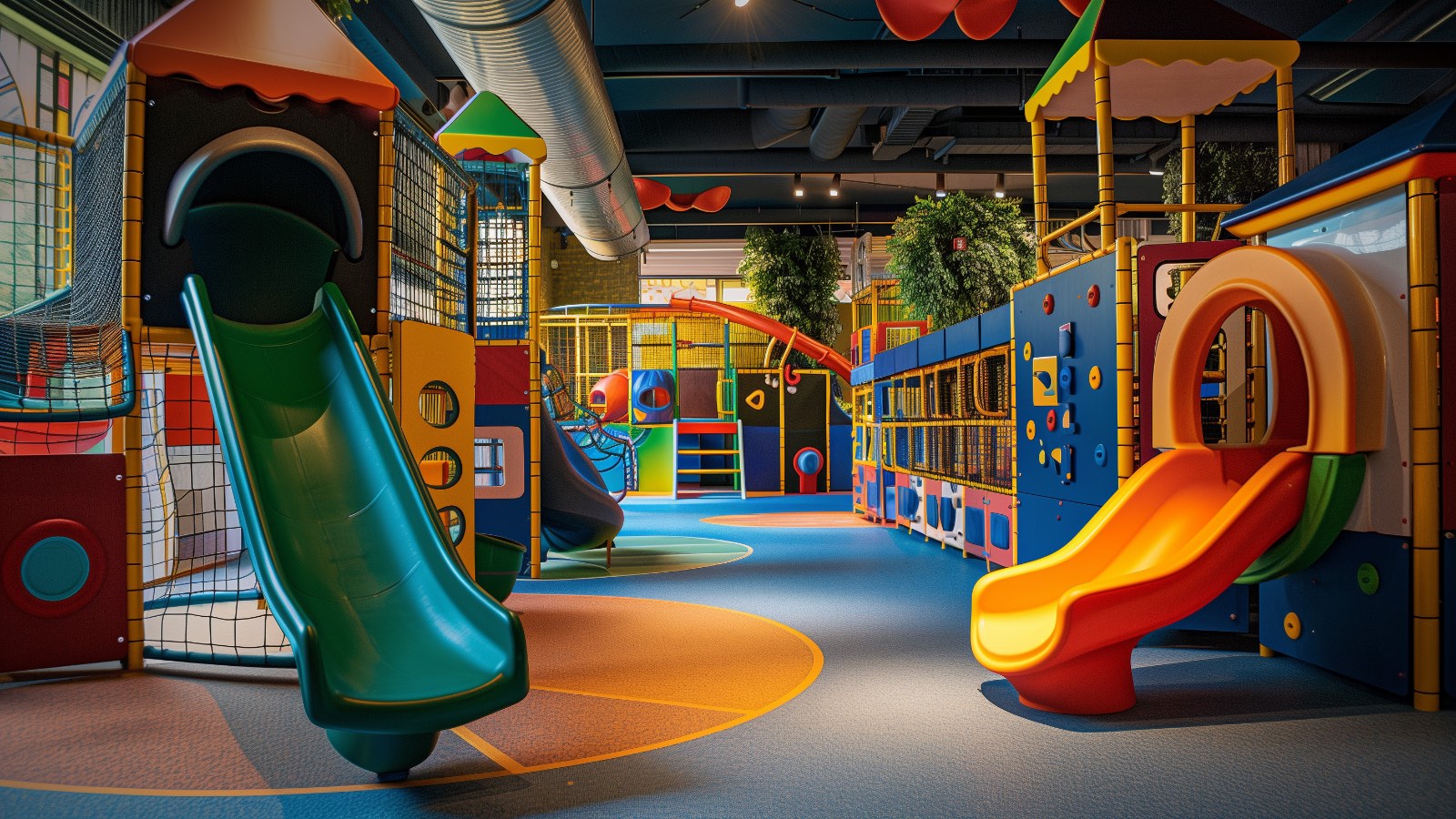
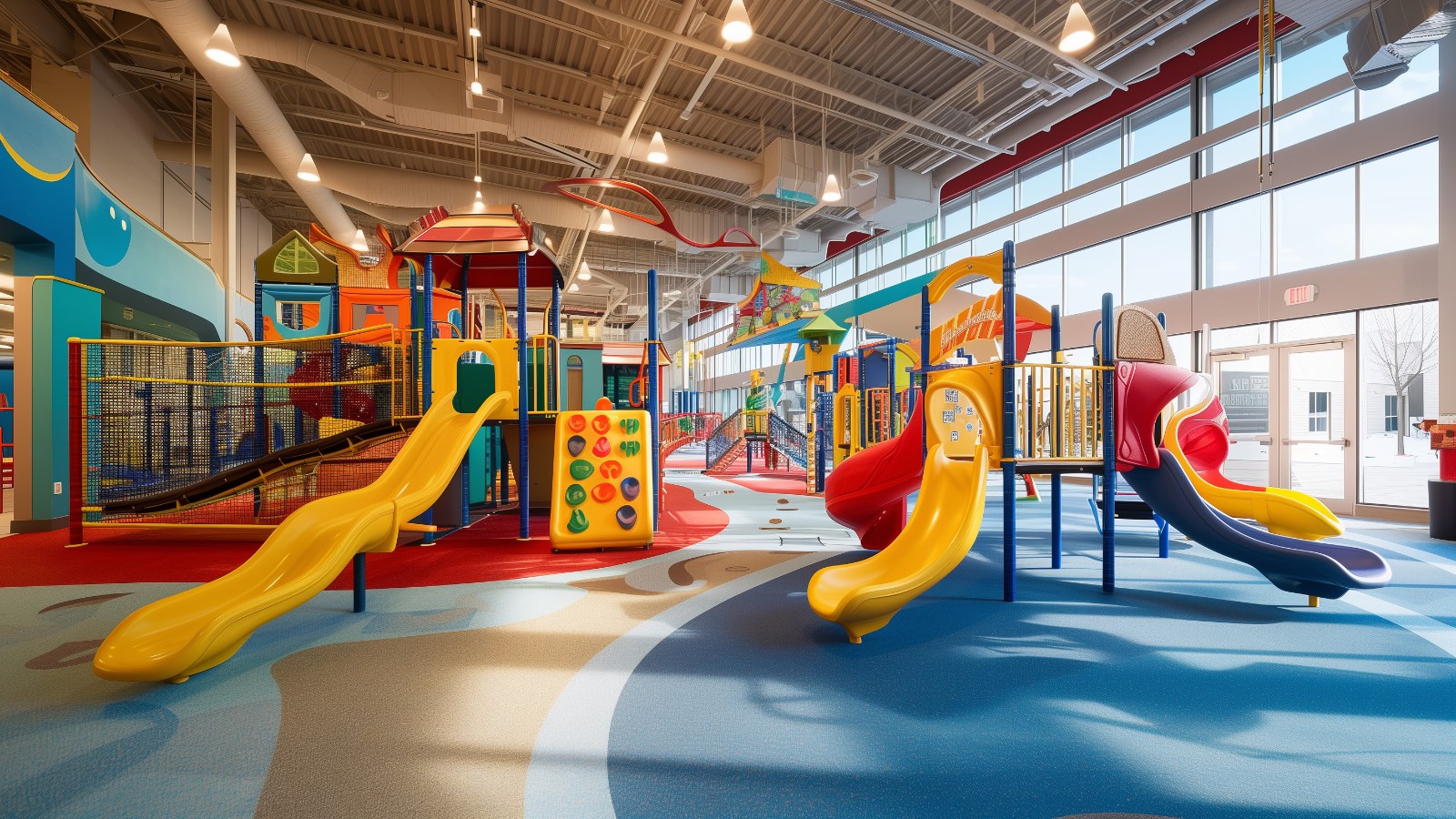
Embracing the Joy of Indoor Playgrounds
Indoor playgrounds stand as a testament to the innovation in child-centric spaces, where the indoors transform into a realm of adventure, learning, and fun. They embody the essence of creating a safe, engaging, and stimulating environment for children. From climbing up a rock wall to navigating through ladders or from the imaginative play within a house structure to the simple joy of sliding down a slide, indoor playgrounds cater to various interests and developmental needs. These playgrounds are not just about physical activity; they’re about nurturing the imagination, encouraging problem-solving skills, and fostering social interactions among peers.
For businesses, the venture into indoor playgrounds presents a valuable opportunity to offer a service in constant demand: a secure and entertaining space for children to play, regardless of weather conditions. The adaptability of these spaces means they can grow and change with the needs of their young clients, ensuring longevity and relevance in the community. Moreover, for parents seeking to bring a slice of this joy into their homes, the market offers numerous options to create smaller-scale indoor play areas. The possibilities are vast, whether installing a mini rock wall, setting up a playhouse, or arranging a series of ladders and slides. Ultimately, indoor playgrounds represent a bridge between necessity and innovation, offering a space where children can safely explore, learn and be kids, all under the watchful eyes of their caregivers. This blend of fun, exercise, and education makes indoor playgrounds invaluable to any community or home.














